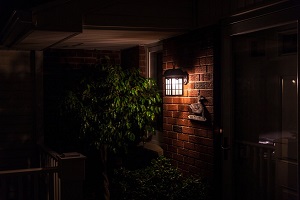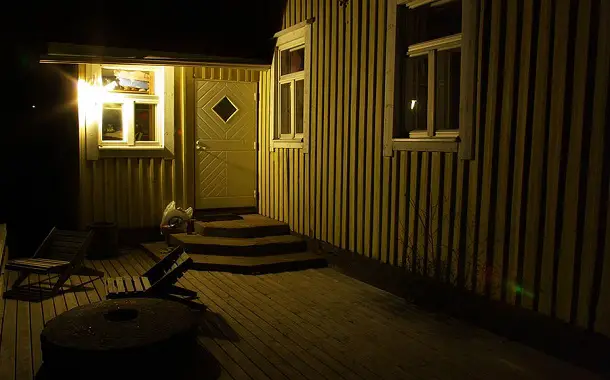How Much Does It Cost To Leave A Light On?
Last Updated on May 5, 2023
Written by CPA Alec Pow | Content Reviewed by ![]() CFA Alexander Popinker
CFA Alexander Popinker
The light bulb, which illuminates our home even when it’s dark outside, has become an integral part of our daily lives. Choosing the most suitable bulb, not just economically, is very important. If you’re thinking about buying new bulbs, maybe you should choose the most energy-efficient ones.
That’s why there are different specifications and technical parameters that provide more information about a bulb to facilitate the right choice and save you some real bucks.
First of all, you should think about the purpose of the light bulb and where you will place it. Then what type of light bulb you choose, what light intensity you will need (light power), what color temperature to choose, the clarity of the colors, the time from ignition to full light, and especially how long the bulb will last.
How much does it cost to leave a light on?
It can cost you from $0.03 to $0.16 per 24 hours to leave a light on. As you may know, the energy consumption and the cost depend on the type of bulb and its light power, but also on the cost per kWh from each state.
USA electricity prices
| Household kWh Cost | Business kWh Cost |
|---|---|
| $0.180 | $0.150 |
| Light Source | Consumption (kWh) | Cost per Hour |
|---|---|---|
| 50W Halogen | 0.05 | $0.015 |
| 4.8W LED | 0.0048 | $0.0014 |
Most Americans leave their lights on for about 8 hours per day, and they will most likely pay as follow:
| Light Source | Cost per Day | Cost per Week | Cost per Month | Cost per Year |
|---|---|---|---|---|
| Halogen Downlight | $0.12 | $0.84 | $3.60 | $43.20 |
| LED Downlight | $0.012 | $0.08 | $0.35 | $4.15 |
As you can see there is a big difference, and if you have about 20 halogen bulbs around your house and you replace them with LED bulbs, you can save around $800 per year.
How can you reduce the cost?
In case you have many lightbulbs around the room you can turn off some of them and save some money. But, the most cost-efficient option would be to change all your halogen and incandescent lightbulbs with LED bulbs, if you want to leave all your light on.
LED bulbs use 5 times less energy, and if you leave the light on all day long you can save up to $5 per day.
Choosing the right type of light bulb
Halogen bulb
It is an incandescent light bulb, slightly improved. Its technological principle is based on the incandescent filament that emits light. Unlike the incandescent bulb, it contains gas with halogen elements. They allow for a higher temperature and longer filament life. There are bulbs that can operate at higher temperatures, over 250°C.
Halogen bulbs work with 12 V and 230 V power supplies.
Typical advantages of this technology include high-quality light, a luminous flux which is about 20 lm/W), excellent color rendering (Ra = 100), immediate ignition, possibility to dim the bulb, does not contain mercury, and the purchase price is low.
The disadvantage is very low efficiency, namely high electricity consumption, high surface temperature, and short service life, often 2000 to 3000 hours.
Led bulbs
The abbreviation LED indicates semiconductor electronic components – from English light-Emitting diode. Undoubtedly, the biggest advantage of these bulbs is the low electricity consumption, which by proper use can be up to 90% more economical.
The amount of energy from LED bulbs is much lower than that of incandescent, economical, or compact fluorescent lamps.
For example, compared to incandescent bulbs, the LED bulb has a lower energy consumption of up to 7 times lower, and final costs up to 4 times lower for the same amount of light.
The LED light illuminates immediately after ignition at full power, so it is not disturbed by frequent turns on and off, or for a short period of time. Led products are also resistant to shock and mechanical damage.
The most powerful LED bulbs available today have an output of about 12 W – 15 W, equivalent to the 90W – 120W power of an incandescent bulb.
Most LED bulbs are designed for a 230 V power supply, but there are also 12 V LED bulbs for which you will need a power supply/transformer, especially spot bulbs or small models.
Their life span is more than 10 years. For LED products the range is of 50 000 hours, equivalent to 24 years with 6 hours of light per day, to 100 000 hours. It depends on the type of light source, the materials used, and compliance with the conditions for correct use.
It is also important that LED products are environmentally friendly. They do not contain toxic substances, lead, and mercury, so they can be used anywhere without fear of being destroyed, and can be recycled afterward.
A very popular choice nowadays is the lighting of different places and corners in our house with the help of LED strips, kitchen furniture, bathroom, stairs, cabinets, etc.
Other costs that add up
The cost of leaving the light on does not imply the cost of the lightbulb, so you should consider this, as well as its lifespan.
| Comparing Household Lamps | Old Incandescent | New Incandescent | LED |
|---|---|---|---|
| Average cost | $0.50 | $1.25 | $4.95 |
| Lumens (light output) | 780 | 780 | 780 |
| Wattage (energy usage) | 60 | 42 | 5 |
| Lumens per watt | 13 | 18.5 | 156 |
| Average lifespan | 1,500 hours | 2,500 hours | 25,000 hours |
In general, a simple LED bulb costs from $3 to $10, but you should spend around $8 for a high-quality one. There are also smart LED bulbs, which can be controlled by WIFI, and can cost from $25 to $50 each, or color-changing LED bulbs on which you can spend $12 to $18.
Save money with smart bulbs
 First, you need to understand how this happens. Why do smart bulbs consume less power than normal bulbs?
First, you need to understand how this happens. Why do smart bulbs consume less power than normal bulbs?
Forget the power in Watts and guide yourself by the luminous flux, lighting power, measured in lumens. Being very different technologies, smart bulbs are often LED bulbs. As you probably already know, LEDs are some of the most economical lighting sources on the market.
The following rule applies: The higher the efficiency (the more lm/W), the higher the energy cost savings.
Led sources are able to produce more light in a watt. At this time this value is in the range of about 80 to 160 lm/W, compared to incandescent bulbs, about 12 lm/W, halogen bulbs, 24 lm/W, compact fluorescent tubes, 60 lm/W, or fluorescent lamps, 80 lm/W. This is important in terms of the economy of their functioning.
An energy-saving bulb uses only 9-10 watts to give light like a 40 W incandescent bulb, and a 60 W incandescent bulb corresponds to an energy saving 11-12 W.
So, a 60 W bulb, which gives enough light in a medium-sized bathroom, can be successfully replaced by a 7-8 times lower consumption LED bulb.
It is useful to use LED bulbs for your own budget. If we change all the classic filament bulbs, as everyone knows them with the LED ones, we can save up to 80% of the lighting consumption.
Even though LED bulbs are more expensive than halogen and incandescent bulbs they have a longer lifespan and will really save you money on your electric bill.


Leave a Reply
Want to join the discussion?Feel free to contribute!